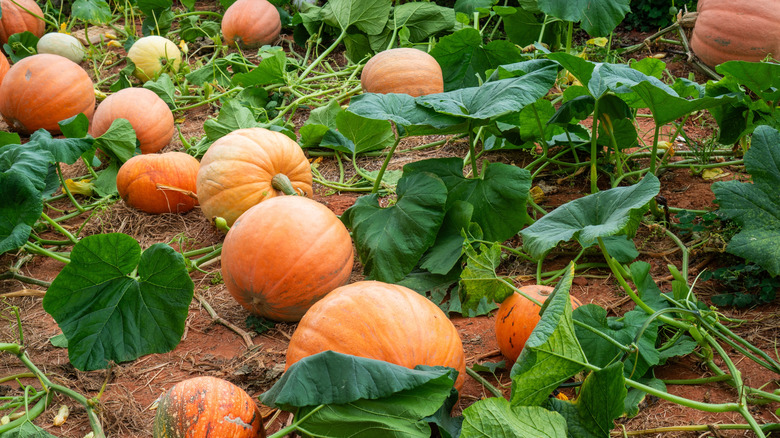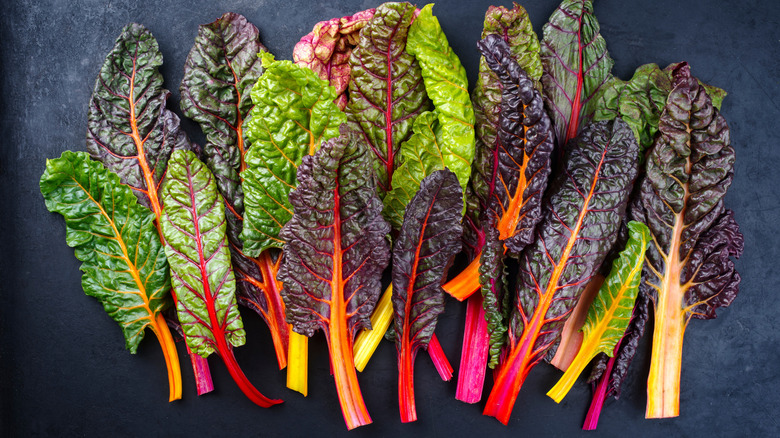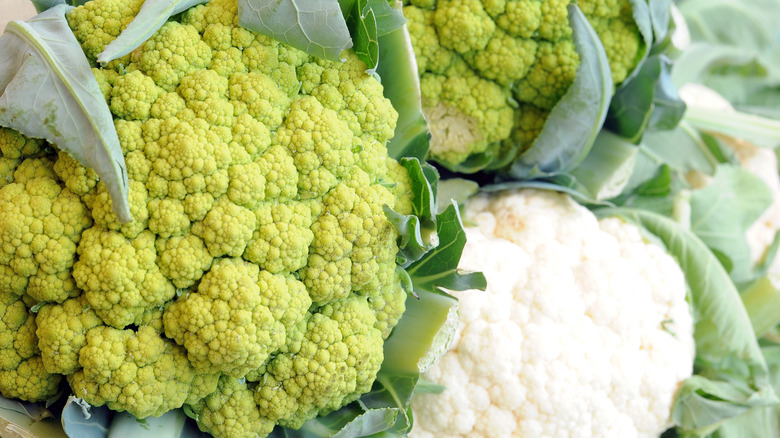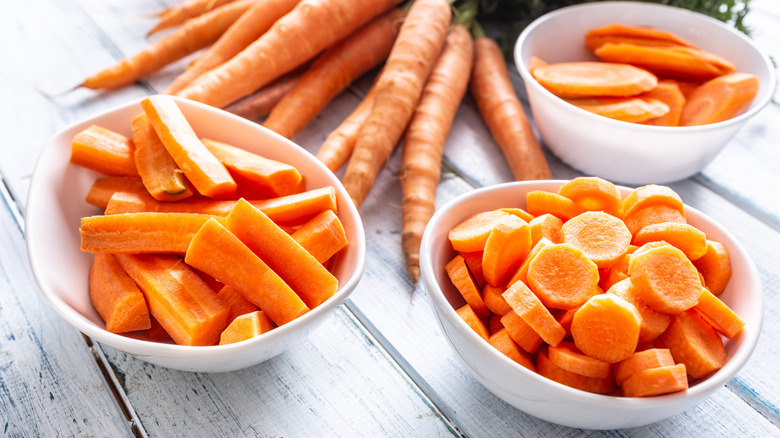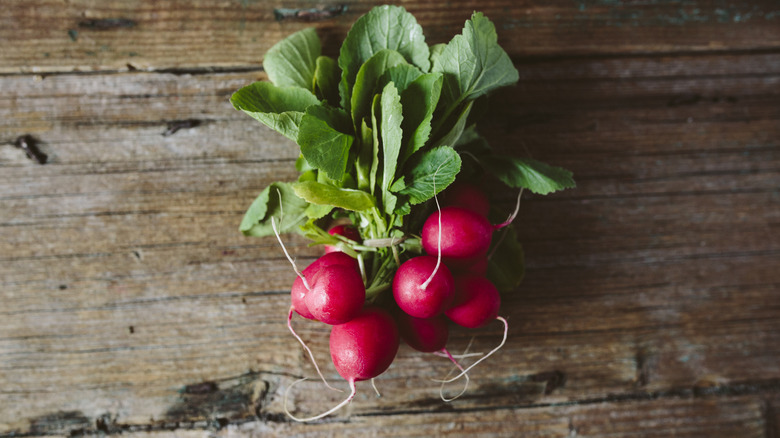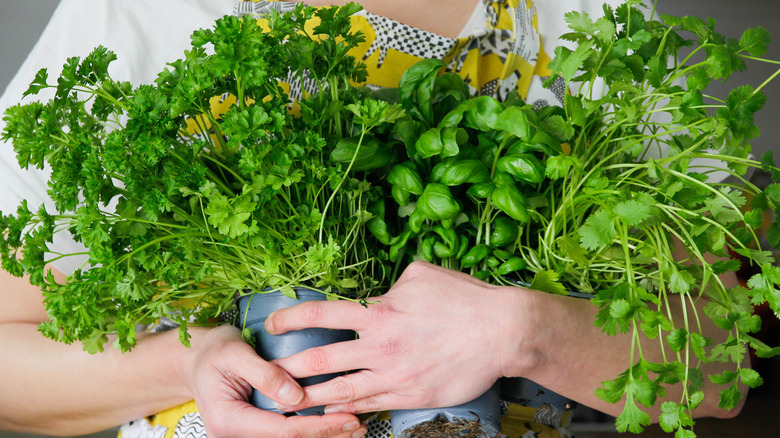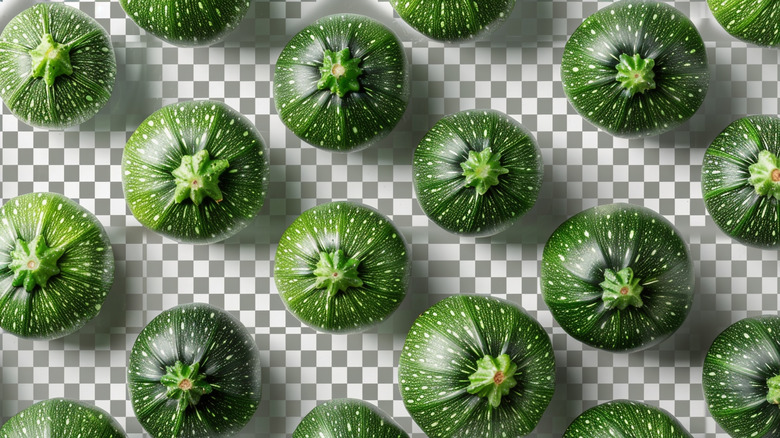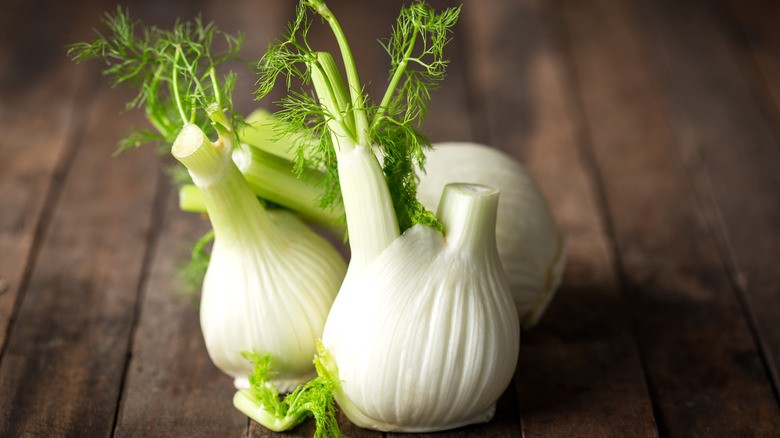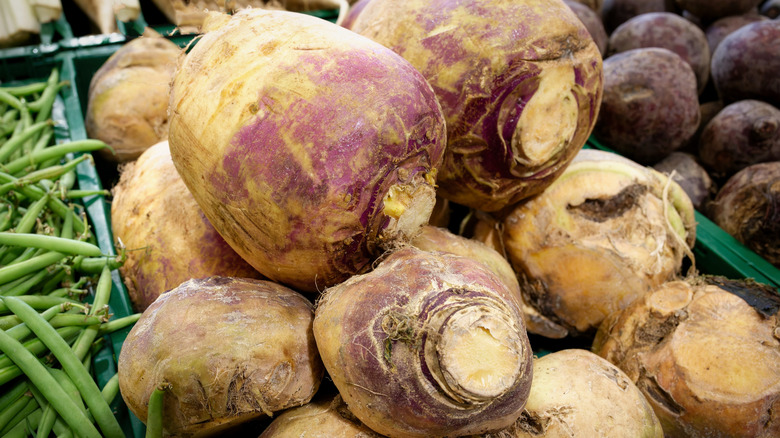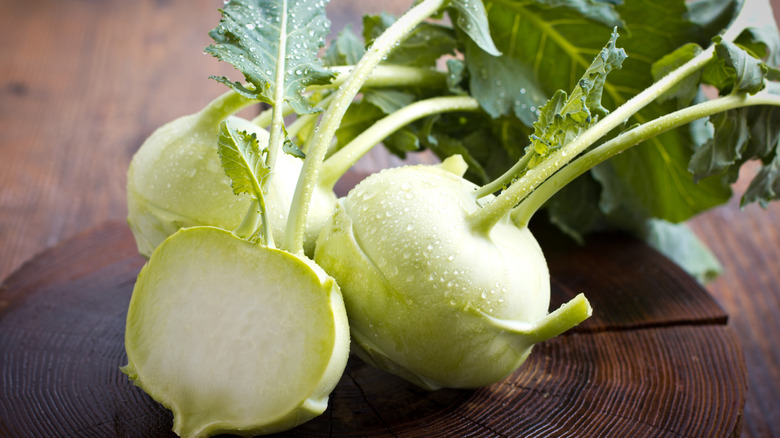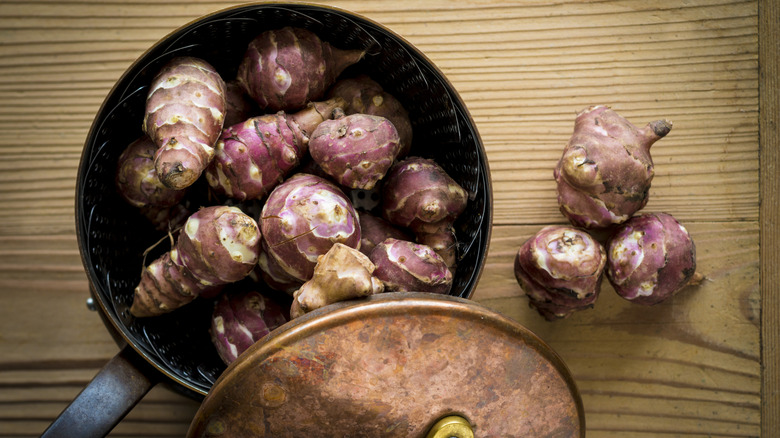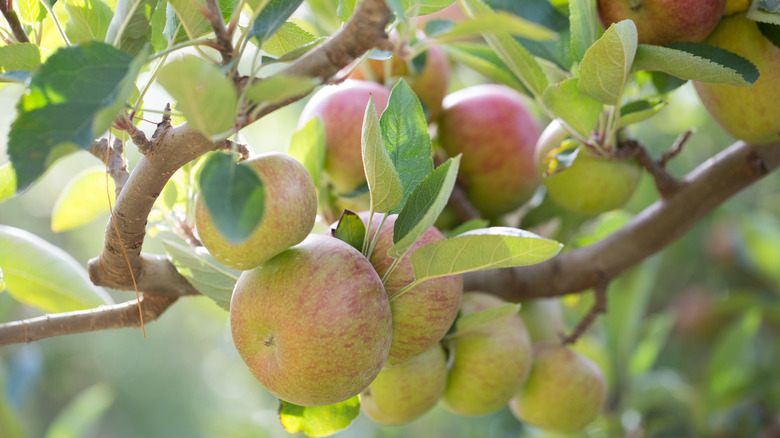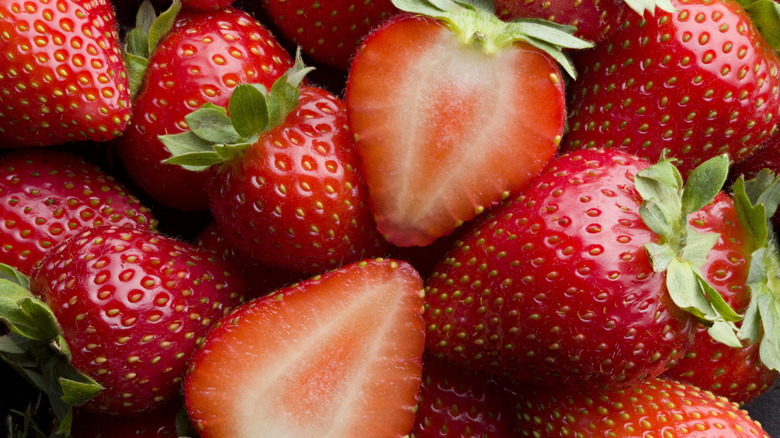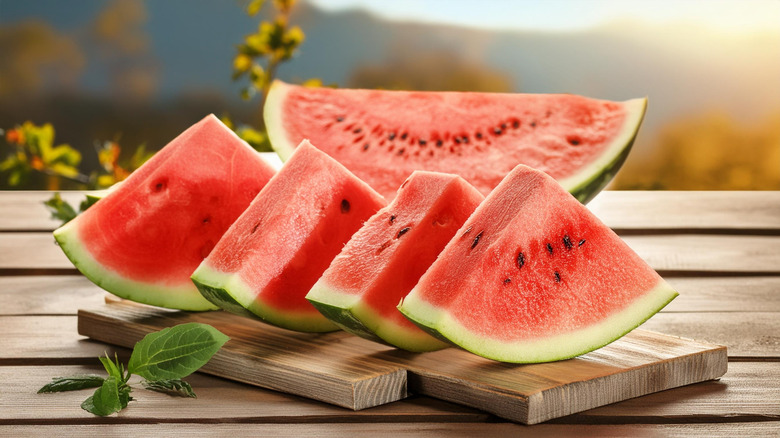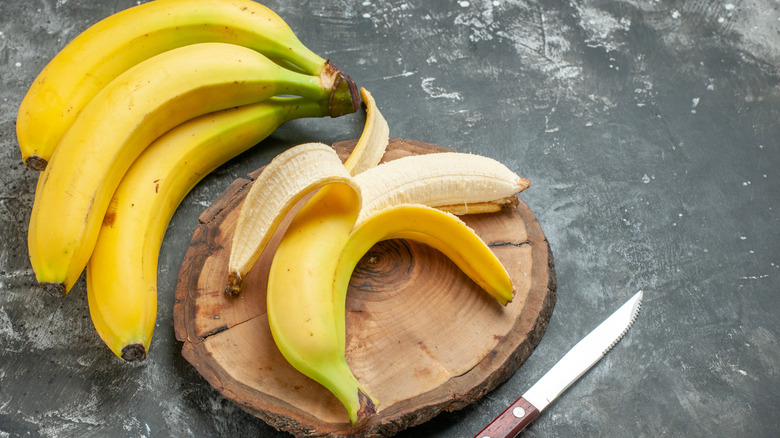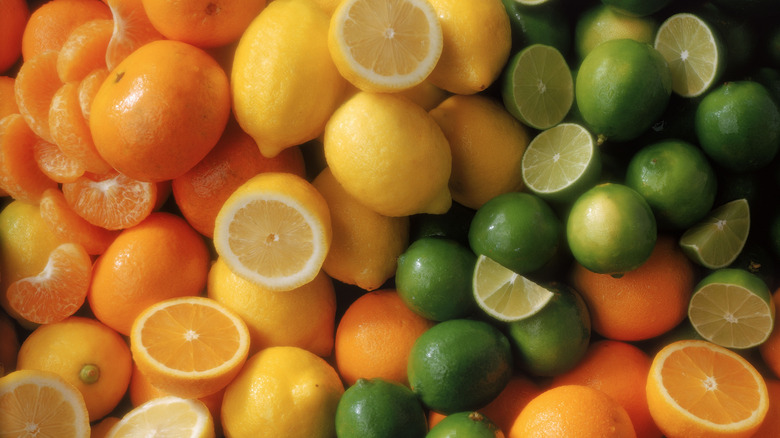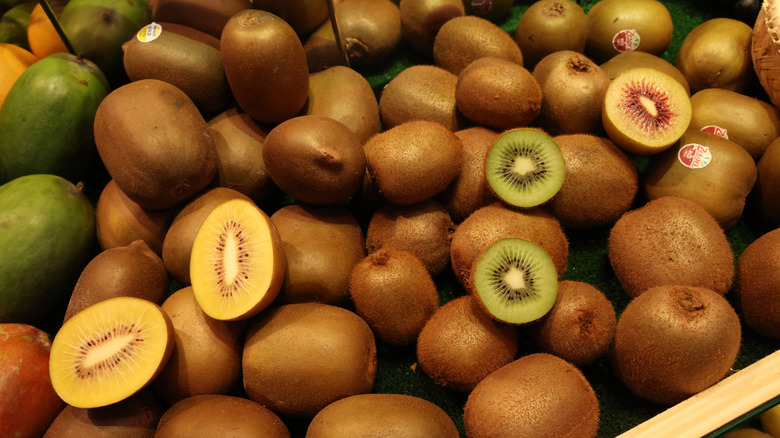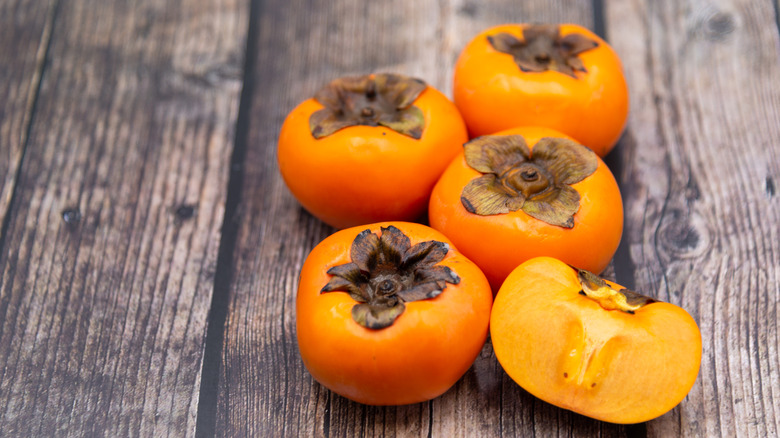James Beard Award Winning Chef Gives Us Vegetables And Fruits You Can Use Every Part Of
We may receive a commission on purchases made from links.
While data indicates almost 90% of adults don't eat the recommended amount of vegetables, and 80% aren't eating enough fruit,James Beard award-winning chef Steven Satterfield says a new narrative has been in the works. He believes the past five to 10 years has seen a greater emphasis on cooking vegetables and fruits. Satterfield, who owns the Atlanta-based Miller Union and Madeira Park restaurants, prefers buying what's in season and tasting an ingredient at its peak.
The chef is also a champion for using entire vegetables and fruits. In fact, this philosophy has provided the inspiration for his labor of love: "Root to Leaf: A Southern Chef Cooks Through the Seasons." Here are tons of vegetables and fruits you can use every part of, according to research and also the man who wrote a book on the subject.
Potatoes
Each person eats around 124 pounds of potatoes every year in the United States –from crispy french fries to fluffy mashed potatoes. Many recipes call for spuds without the skin, but you can easily toss them in a little olive oil, sprinkle with salt (or your choice of seasoning) and roast them until they turn crispy — delicious!
Scrubbed and loaded baked potatoes is a fine way to use every part of the tuber. Beware of any green or sprouted potatoes. And keep an eye out in the fall for sweet potatoes – their leaves are a delicious alternative to spinach.
Pumpkins
Apart from Halloween, pumpkins are the vegetable that keeps on giving — oh, but wait, pumpkins are technically a fruit.Why? Because every part of this orange funster is edible: The leaves, stems, flowers, and seeds, as well as the pumpkin flesh itself. And also (more accurately) because pumpkins grow from the flower of its plant, and their seeds are contained inside.
The flowers are delicious sprinkled into a salad, bringing an earthy flavor to the plate, and you can toast the seeds in a hot pan with a splash of oil and grind of salt for a tasty snack. The slightly spiky leaves and tendrils will soften when cooked, making them a good substitute for leafy greens such as spinach.
Leafy greens
Leafy greens are a chance for home cooks to get creative in the kitchen (in terms of texture and flavor), by using the whole plant. "Kale can be massaged with dressing into a hearty salad, coated with olive oil and baked into a crispy chip, or baked into a frittata for added structure," said chef Steven Satterfield.
He dices the stems of chard and sautés them with onions, before adding the leaves for a flavorful side. "Collard greens, historically known for being cooked a long time in a smoky pork broth, have many other uses," Satterfield said. "Such as being blanched and stuffed or rolled into dolmas, or when young, cut into thin strips and dressed like a salad."
Cauliflowers
For restaurant owner Steven Satterfield, most home cooks don't step out of their comfort zone when it comes to cooking vegetables. "As a chef that has focused on seasonal produce for decades, it's my job to think outside the box," he said. When it comes to the humble cauliflower, every part of it gets a chance to shine.
The leaves can be cooked and eaten in the same way as a cabbage. They are a tasty addition to soups, or thrown into a hearty casserole. As for the woody stem? Many people think it is good for little more than compost — but not so fast. If you have a food processor, turn that stalk into veggie rice in seconds.
Broccoli
Depending on where you live, this versatile vegetable is available during winter and early spring. While many recipes focus on the head, there's more to enjoy than just the florets. If you grow it or buy fresh broccoli from a farmer's market, make sure to keep those huge leaves: They're delicious! Think collard greens but with a more subtle flavor.
Pop them in stews and casseroles, or lay them out on a sheet pan, brush with a little olive oil and air-fry for the healthiest chips. Broccoli stalks make tasty snacks too. Peel off the outer layer and cut them into rounds, add a bit of olive oil, a sprinkle of cheese, then put them into the oven for 15 minutes at 400 degrees F.
Carrots
When asked to name his favorite vegetable, Steven Satterfield, owner of Miller Union and Madeira Park restaurants, gives the same answer every time: "I don't like to pick favorites, because I am an equal opportunity fruit and vegetable lover!" It's no wonder that carrots feature on his list. After all, this crunchy, sweet ingredient is both flavorsome and flexible, featuring in many sweet and savory recipes.
That said, even he has a hard time using up their leafy tops. Their robust flavor can be off-putting, so Satterfield recommends pairing them with spices and herbs to tamp it down a little. He also advises using carrot tops to make a delicious home-made pesto, as well as a Moroccan sauce for lamb, known as chermoula.
Radishes
There's nothing like a crunchy radish to give a peppery kick to a salad. These scarlet orbs are popular in the United States and further afield, but while countries such as Greece make use of the radish tops, in the U.S. they're often tossed aside. Not by chef and author Steven Satterfield, however, because he believes they're perfect for French sauce pistou. He also uses the tops as an ingredient for a certain quiche.
Radish greens can be used in a variety of dishes, such as pesto, stir-fries, and salads — because of their spicy flavor they're perfect for any dish where you want a little extra kick.
Beets
Chef Steven Satterfield recommends home cooks use every part of a vegetable or fruit (if possible) for simple reasons: "You get the most out of your purchase and you get the chance to experiment with new ideas," he said. Beets may not be top of everyone's shopping list in the United States, but that doesn't mean we should ignore them.
People from Africa and the Middle East to Nordic countries and Australia enjoy beets, and not just the bulbous bit of the vegetable: All of it is edible. Apart from being packed full of vitamins, minerals, and fiber, beet greens are easy to cook. For example, wilt them in a warm pan with olive oil and chopped garlic for a healthy (and delicious) side.
Corn cobs
Seasonality is important when it comes to what chef, author, and restaurant owner Steven Satterfield serves in his restaurants. "If it is not in season where I live in Atlanta, then I probably will not like it, i.e. supermarket fruit or vegetables shipped in from another part of the world, where it may be in season elsewhere." Frozen corn on the cob can be enjoyed all year round but the freshly picked, summer kind is in another league.
Many people throw away the leftover cobs or put them in a composter, but not Satterfield. He uses them to make a sweet broth that's reminiscent of tea, as well as in soups and broths. It's also a key ingredient in his summer succotash recipe.
Herb stems
Almost 95% of people in the United States use herbs to infuse their dishes, according to Instacart, with chimichurri staple cilantro and flat-leaf parsley among the top 10 most popular herbs. While they may not be to every home cook's taste, for chef Steven Satterfield, fresh aromatics offer another chance to use every part of the plant.
The next time you're rusting up a stock as a base for a dish, or a hearty braise, throw in a handful of herb stems to cut down on food waste, the award-winning chef suggested. They will also add depth and complexity when tossed into a soup, while the herb leaves make for an excellent garnish.
Green onions/leeks
Green onions, also known as scallions, and leeks may look similar but these cousins of the allium family taste very different. Green onions can have a strong flavor, and are perfect for pepping up a plate of salad or a silky omelet. Leeks are milder and the older or thicker they are, the more cooking they need.
For Steven Satterfield, chef and owner of Miller Union and Madeira Park restaurants, the green leaves on leeks are perfect for soubise, a creamy French sauce that pairs beautifully with roasted spring veggies, chicken, or fish. It's worth noting that the exterior leaves on leeks and green onions, as well as ordinary onion skins, are the perfect vegetable trimmings for a home-made stock.
Zucchini
Like pumpkins, zucchini are a vegetable that keeps on giving. They come in a variety of shapes and sizes, from the dark green and yellow long forms, to white star-shaped kinds. They can be eaten at every stage of growth, from very young, almost finger-sized vegetables to mature, marrow-sized zucchini.
It's not just the zucchini themselves that are edible: Every part of the plant can be enjoyed. The leaves are best eaten when young, and cook like kale or spinach. Alternatively, you can dry them out and blitz them into a powder for smoothies. The flowers can be thrown into a salad for a dash of color, stuffed or dipped in batter and deep-fried for a delicious side.
Fennel
Part of the inspiration behind "Root to Leaf" was persuading people to "seek out what is growing in their own community," chef Steven Satterfield said, but he's also keen to explain what home cooks can do with these culinary goodies. For example, someone buying fennel for the first time may not know the stems and fronds on the top of the plant are both edible.
Satterfield uses fennel's delicate leaves in the same way as a fresh herb to bring the delicate aniseed flavor to a range of dishes. Alternatively, the fronds can be blended with green garlic, olive oil, and salt for a tasty sauce – perfect for pouring over fish, served with the fennel stems that have been sautéed with some fresh spring leeks.
Rutabaga
With its purple and whitish-yellow coloring and gnarly appearance, rutabaga may not be the prettiest vegetable on the block but it is a foodie winner for restaurant owner Steven Satterfield. He said: "[It is] one of my favorite root veggies for its earthy, mellow sweetness. It has a great creamy texture when cooked."
The bulbous roots are versatile as well as tasty: They can be roasted, baked, or mashed, and pair well with a variety of other ingredients. Although rutabaga leaves are quite small compared to the traditional turnip, they make a delicious addition to green salad, or can be roughly chopped and sprinkled over cooked rutabaga as a tasty garnish.
Kohlrabi
If you're a fan of cabbage or broccoli and want to branch out a little further into the taste space, kohlrabi is the ideal next step. "I love how crunchy, juicy and sweet this brassica is. It's wonderful pickled, lightly cooked, or raw," enthused chef and author Steven Satterfield. Kohlrabi may look unusual, with a slightly flattened pale green bulb and slender shoots, but it is hugely versatile.
They can be eaten raw and have a peppery, slightly sweet flavor. They can also take almost every cooking method thrown at them: Boiling, mashing, roasting, steaming, and sautéing, plus they will keep in the fridge for several days. If your recipe calls for celeriac, turnips, or white radishes, you can use kohlrabi instead, or swap it in for cabbage and give your home-made summer coleslaw a twist.
Sunchokes
When winter moves into spring, the vegetable patch can seem a little threadbare — except for sunchokes. Also known as Jerusalem artichokes (though they have nothing to do with either), Steven Satterfield adores it. "This little tuber that looks like ginger is an incredible source of fiber and is sweet as candy during the colder months," he said.
Sunchokes are similar in many ways to potatoes, though they can be eaten raw, unlike the humble spud. The skin of a sunchoke is totally edible, and they can be cooked in a variety of ways, including frying, roasting and mashing. When buying your sunchokes, be sure to seek out the smaller ones, which have more sweetness and flavor.
Cabbages
When it comes to the best vegetable that can be eaten in its entirety, for James Beard award-winning chef Steven Satterfield, the cabbage reigns supreme. "Cabbage is the most versatile green leafy vegetable," he said. "It can be enjoyed raw, blanched, steamed, roasted, seared, broiled, fried, or pulverized into a relish. It can be used in many more ways than the obvious common recipes."
Cabbage takes in everything from Brussel sprouts to Bok choi and conehead cabbage, covering around 400 varieties in an array of shapes and colors. Some are flat-leaved and sweet, others are wrinkled and deep green or purple, but we can use every scrap of them, from a tangy 'slaw to taking canned soup to the next level.
Apples
Apples are among the most popular fruits in the United States. Everything from the skin to the seeds can be consumed, busting the myth that the latter are dangerous for humans. They are, but only if you eat lots of them. Apple skins and cores can also be frozen for later use, making them practical too.
Steven Satterfield uses the same leftovers to make a jelly that is served with savory items, including chicken and cheese. As for his favorite apple variety? "I'm obsessed with the Pink Lady apple," he said. "It possesses both sweet and tart qualities with an exceptional crunchy texture and it's great for eating or cooking."
Strawberries
Late spring and summer is strawberry season in the United States. This luscious fruit is beloved by 94% of households, and of the roughly 8 pounds eaten annually, about¾ of them are fresh berries. Despite their popularity, not everyone knows that we can eat every part of the strawberry plant, stems and leaves included.
As well as tasting delicious, strawberries are a good source of fiber and vitamin C, and have benefits that extend far beyond jars of jams and jellies. A study in the journal Molecules said the leaves of the strawberry tree had several benefits, including: "Significant antioxidant activity, antibacterial, and antifungal effects, and anti-inflammatory action."
Watermelons
Not every melon variety can be eaten in its entirety but watermelon is among those that you can. Atlanta restaurant owner Steven Satterfield pickles leftover rinds to create a Southern classic dish, giving it a healthy makeover by removing the sugar and adding a dash of fresh lime juice.
You can also cook watermelon rinds. They are packed with vitamin C and A, magnesium, and potassium, and make an amazing stir-fry. Throw it into a hot wok alongside a handful of scallions, some garlic, and ginger. When it's just tender, the rind is ready and will have a delicious, silky texture. Pair it with rice and just a splash of sesame and chili oils, and soy sauce.
Bananas
In the United States, people eat around 27 pounds of bananas every year. It's easy to see why: They are the take-anywhere snack, sweet and tasty with lots of potassium, magnesium, and vitamins. They're also a great ingredient, especially in pancakes, muffins, and curries. Bananas even help us produce melatonin to help us sleep.
Their peel is every bit as useful and nutritious — they contain phenolics, which have antioxidant and antimicrobial properties. Banana peel has also been used for years in Brazil and Venezuela to create a vegan version of pulled pork, but if you want to keep it simple, try a smoothie. Cut up very ripe peel and add it to the other ingredients before blending.
Citrus fruits
Some people remove every scrap of peel and pith from an orange before they eat it. Little do they realize not only are they completely edible — as with all citrus fruit – they're also where much of the health benefits lie.
If you don't want to eat your orange peel, mix it with a sugar syrup — made with equal parts water and sugar that's been dissolved — in order to candy it. For chef Steven Satterfield, there's one citrus fruit that stands out above all others: The dekopon. "Also known as a sumo mandarin, [it] is everything you want out of a mandarin orange but bigger, brighter, sweeter and more tangy," he said.
Kiwi fruit
Traditionally, kiwi fruit prefer warmer climes to grow, but in 2024 the USDA announced it had developed a variety that thrived in cooler weather. Great news for fans of this peppery-yet-sweet, juicy fruit, which can be eaten in its entirety and is packed with potassium, fiber, and vitamin C.
There are two main varieties of kiwi: One has green flesh while the other has a yellow interior. Both have slightly rough, fuzzy skin which some people peel before eating. Those who choose to eat kiwi fruit skin can expect several health benefits, including a 50% increase in fiber, 30% uptick in vitamin E and 34% rise in folates.
Persimmons
At first glance, this fall favorite looks like a large tomato: Round and plump and orange-red in color, they're a delicious addition to your fruit bowl. Persimmons come in two main varieties, but only one has chef Steven Satterfield's heart. "I prefer the sweet Fuyu variety over the Hachiya," he said. "The Hachiya must ripen until soft and black to be edible or else it is highly astringent."
Like a tomato, you can eat all of a persimmon, including the seeds. The fruit brings a sweet, almost pumpkin-like flavor to baked goods such as cookies or cakes. It's worth noting that the leaves cannot be eaten raw but they do make a good wrap for meat or fish, and are commonly used to make tea.


